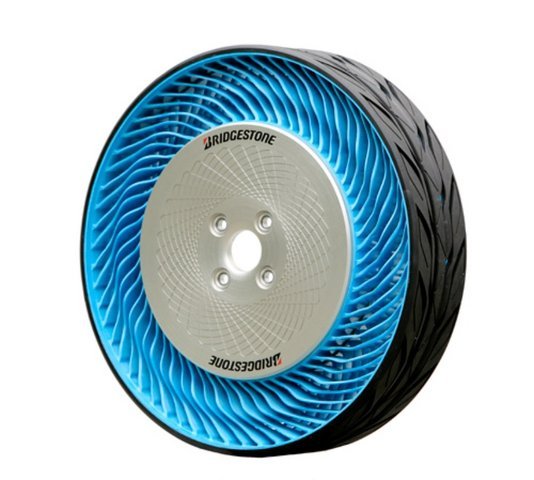Bridgestone’s ‘Air-Free Concept’ Tyre Aims to Do Away With Punctures

This means punctures and even constantly worrying about tyre pressure would no longer be a concern for motorists.
The resins can be heated and cooled multiple times, therefore making them recyclable. Thanks to exhaustive finite element method studies, Bridgestone has also been able to zero in on a design structure that reduces stress and deformation in the inner part of the tyre.
The second generation ‘air free concept’ tyre now has lesser rolling resistance – most of the resistance is due to the deformation of the tyre when it interacts with the road – by simply using propreitary materials and simplifying the structure of the tyre. The thermoplastic resin comes into play here, as the material can help in distributing the pressure throughout the tyre, thereby minimising damage to the contact patch.
Compared to the first-generation concept that could handle only a vehicle weight of 100 kg at a constant speed of 6 kph, the second-generation tyre is leaps ahead as it can support a maximum vehicle weight of 410 kg at a constant speed of 60 kph.
Related News


